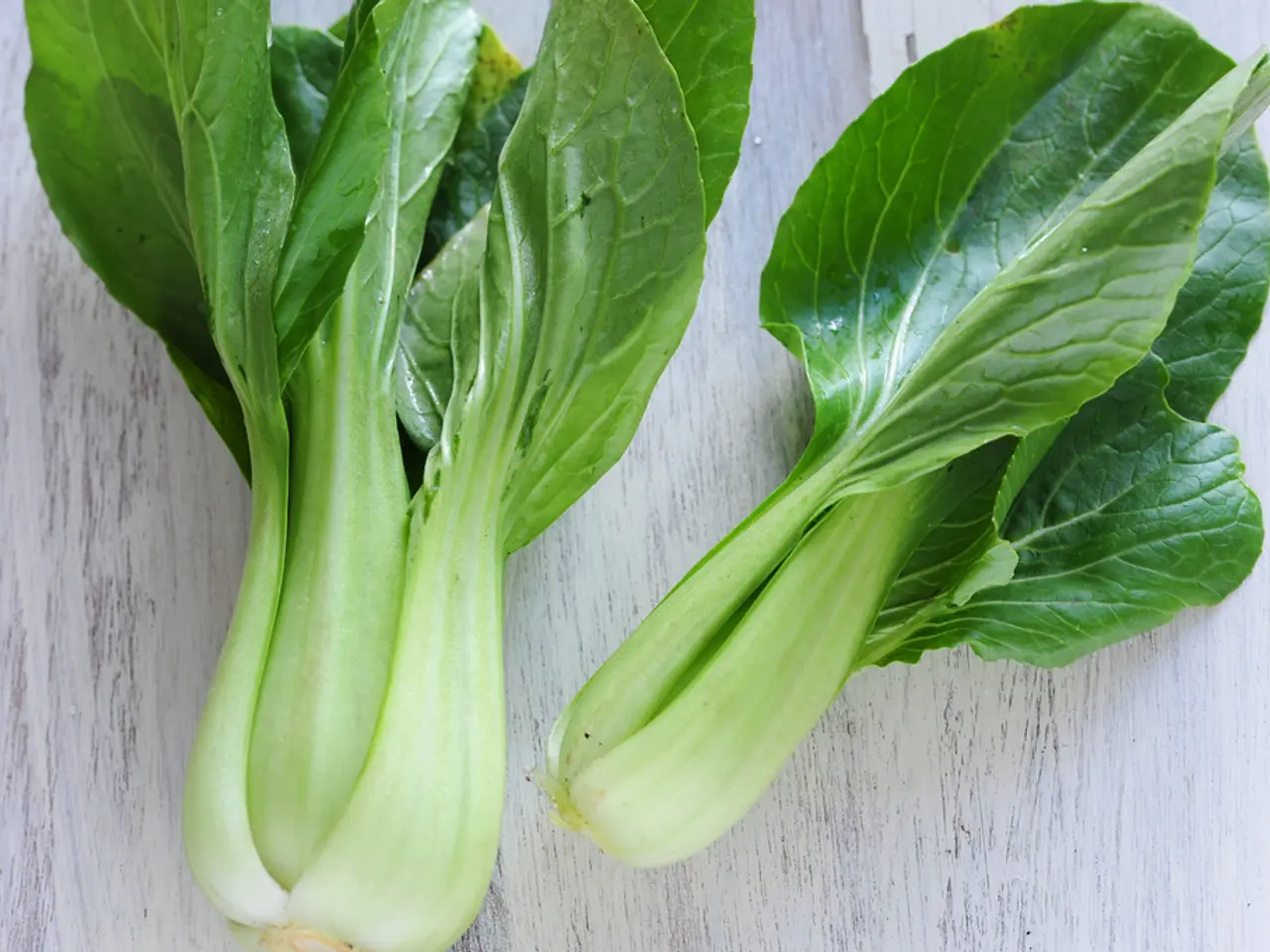Cultivate winter-hardy vegetables for a continuous harvest during the cold season: Discover winter crops for a prolonged yield
In the heart of winter, a bountiful vegetable garden can still thrive with the right planning and care. Charles Dowding, a renowned gardening expert, offers a no-dig, succession planting, and careful timing approach to growing resilient winter crops.
Dowding's methods emphasise no-dig beds, a technique that preserves soil life and fertility. By covering ground-level beds with layers of cardboard and mulch, weeds are suppressed without disturbing the soil structure. This approach is crucial for winter crops, as it helps maintain the necessary soil health.
Succession and interplanting are also key to a productive winter garden. By planting complementary crops closely, such as French beans with chard, crops can be harvested continuously, and space maximised. Beans finish early, allowing chard more room to grow into winter and even spring.
Watering and maintenance are essential elements in a no-dig setup. Hand watering during dry spells supports the plants' growth, and regular harvesting of leaves, like chard, keeps plants smaller and reduces moisture needs, aiding their survival during the winter months.
Summer to autumn sowing is recommended for winter crops. Overwintering brassicas (cabbage, kale, etc.) and root vegetables like fast-growing carrots (e.g., Early Nantes variety) should be sown in August. These established plants have a better chance of surviving frost and producing harvests into spring.
Avoiding late sowing is also crucial. Winter vegetables should be planted by August or early September; sowing later risks seedlings being too small to survive frost damage.
Sunlight and site selection are vital factors. Beds should be in sunny spots, away from trees and hedges that shade or deplete moisture.
Parsnips, leeks, kale, winter squash, and purple sprouting broccoli are some of the vegetables suitable for winter gardening. Parsnips are sown in March to May, 5cm apart, in rows 35cm apart. Leeks, such as 'Bandit', 'Husky', and 'Apollo', are winter-hardy and can be harvested from January to April. Purple sprouting broccoli can be planted 60cm apart and should be chosen according to preference, with varieties maturing from late winter to mid-spring.
To grow winter vegetables, the soil should be kept fertile through thorough weeding, mulching, and spreading a 3-5cm layer of well-composted organic matter on the surface. Early weeding is essential for creating weed-free beds with undisturbed and well-structured soil below.
In cooler areas, 'Uchiki Kuri', a tasty red squash of 750g-1kg average, is a successful choice. Kale, both perennial and annual varieties, is easy to grow and productive, with annuals like 'Red Russian', 'Cavolo Nero', 'Hungry Gap', or 'Thousand Head' sown in June to plant in July. Parsnips root well in undug, heavy soil with compost on top and can be harvested during winter as required.
By following these tips, gardeners can create a resilient winter vegetable garden with minimal soil disturbance, optimised harvest timing, and water-efficient care.
- Charles Dowding's no-dig gardening approach preserves soil life and fertility by using layers of cardboard and mulch to suppress weeds in ground-level beds.
- Succession and interplanting are key to a productive winter garden, allowing continuous crop harvesting and maximizing space, as demonstrated by the planting of French beans with chard.
- During dry spells, hand watering in a no-dig setup supports plant growth, while regular harvesting of crops like chard keeps plants smaller and reduces moisture needs.
- To increase the chances of surviving frost and producing harvests into spring, summer to autumn sowing is recommended for winter crops, with overwintering brassicas and fast-growing carrot varieties like Early Nantes sown in August.
- To grow winter vegetables successfully, gardeners should maintain soil fertility through thorough weeding, mulching, and adding a 3-5cm layer of well-composted organic matter on the surface, with early weeding essential for creating weed-free beds and undisturbed soil structure.




